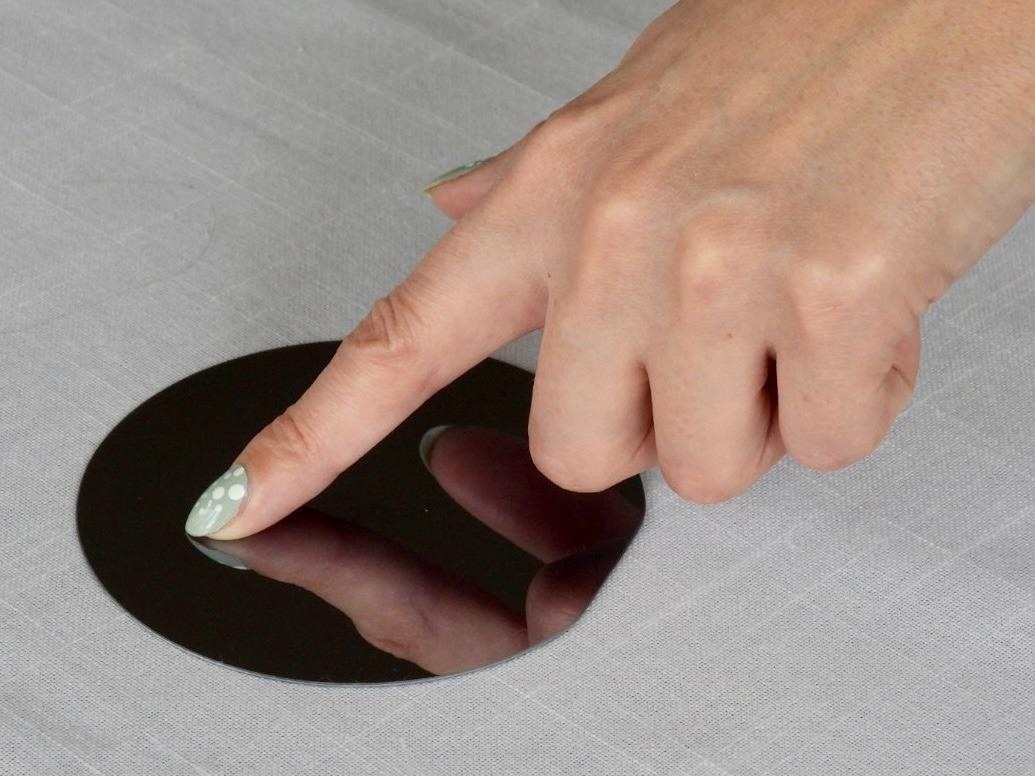Although human eyes are said to be the windows to the world, it is our fingertips that enable us to touch it. To replicate this tactile sensation, existing technology depends on miniature motors and electricity. Nevertheless, the buzzes and bumps they produce are not that good at imitating the real deal.
 Just by touching, people can distinguish between surfaces based only on minor chemical differences. Image Credit: Charles Dhong.
Just by touching, people can distinguish between surfaces based only on minor chemical differences. Image Credit: Charles Dhong.
Now, researchers report proof that the human skin can distinguish subtle changes in chemistry—discoveries they hope may offer the foundation for a new method to regulate touch and better incorporate it into applications, like virtual reality.
The scientists showcased their results at the spring conference of the American Chemical Society (ACS). ACS Spring 2022 is a hybrid conference being held in-person and virtually between March 20th and 24th, with on-demand access available between March 21st and April 8th. The meeting covers over 12,000 presentations on a broad range of science subjects.
When you touch an object, you're feeling its surface, and you can change how it feels by changing the friction between that surface and your finger. That’s where the chemistry comes in. We think materials chemistry could open the door to recreating more nuanced sensations, whether you're designing a surface to feel a certain way, or creating feedback devices for virtual reality.
Charles Dhong, PhD., Study Principal Investigator, University of Delaware
Out of the five senses, technology has incorporated some more easily than others. Smartphone screens, computer monitors, and virtual reality headsets provide comprehensive, even immersive, visuals. Audio systems, too, reconstruct music, voices, and other sounds in high fidelity.
Touch technology has had sluggish progress, partly because it involves numerous types of sensations, for example, pain and temperature. Furthermore, certain efforts to remake touch have included systems engineered to mimic a sense of shifting one’s body—an intricate sensation.
Dhong’s work at the University of Delaware emphasizes a particular type of touch: using fingers to identify texture. Some approaches for inducing this type of fine touch are already present.
A vibrator inside a smartphone draws one’s attention without needing to use sound. In a refreshable braille monitor for people with blindness or low vision, an actuator shifts pins up to form bumps. This kind of touch relies on friction, a kind of physical force, which is the resistance that skin meets as it encounters an object.
Aside from the contours of a surface, chemistry also influences friction. The molecules’ structure within a material and the composition of its surface also impact the sensation. Dhong and his team thought that by changing only chemistry-associated features, they could alter how a surface feels.
In previous research, Dhong’s team asked people to touch single-molecule-thick layers of silane, a silicon-holding compound. No one of the silane surfaces had detectable variances in smoothness.
Nevertheless, people who touched the surfaces could distinguish them based on chemical variances, including the replacement of one atom within each silane molecule for another atom, because of minute variations in friction.
Recent research has shown that people can detect the physical differences between surfaces at a resolution as low as 13 nanometers. Now we are saying that the sense of touch can also identify chemical changes as small as swapping a nitrogen atom for a carbon atom.
Charles Dhong, PhD., Study Principal Investigator, University of Delaware
Dhong will present the latest research covering polymers, the in-demand molecules for artificial materials, at the meeting. Polymers are notable by their chemical formulas as well as by a feature called crystallinity, which illustrates how precisely the chain-like molecules are arranged.
The polymers used in these experiments had matching molecular weights and formulas; only the degree of crystallinity varied.
During their experiments, the team concentrated on the apparent texture of thin layers of polymers. Regarding the silanes, they asked people to slide their fingers over the polymer. This time, they learned that people could also distinguish between the polymers based only on differences in the friction ensuing from minute variations to the crystallinity of the molecules.
A new method for regulating fine touch and the awareness of texture could have numerous applications, explains Dhong. It could, for instance, make it feasible to engineer new kinds of surfaces or to better incorporate this sense into virtual reality settings.
The other applications may perhaps include refining devices, like refreshable braille displays, as well as offering feedback to surgeons carrying out surgery remotely, Dhong states.
The scientists received funding and support from the National Eye Institute and the University of Delaware.